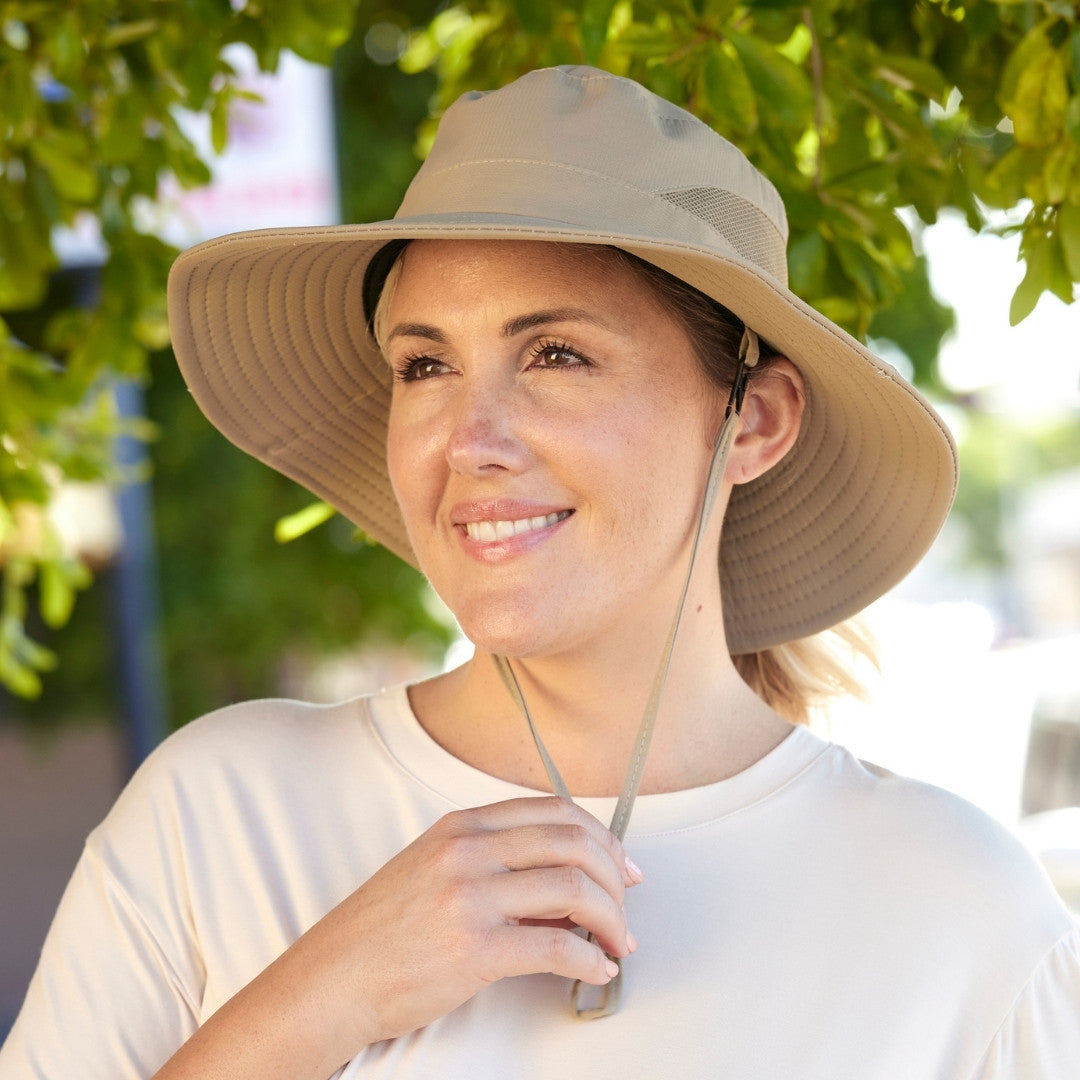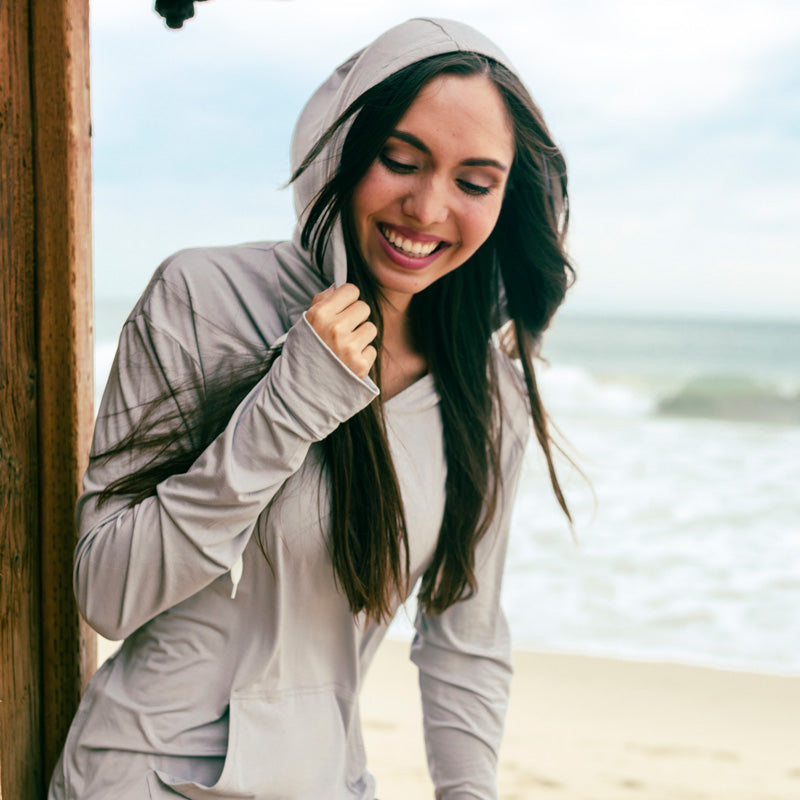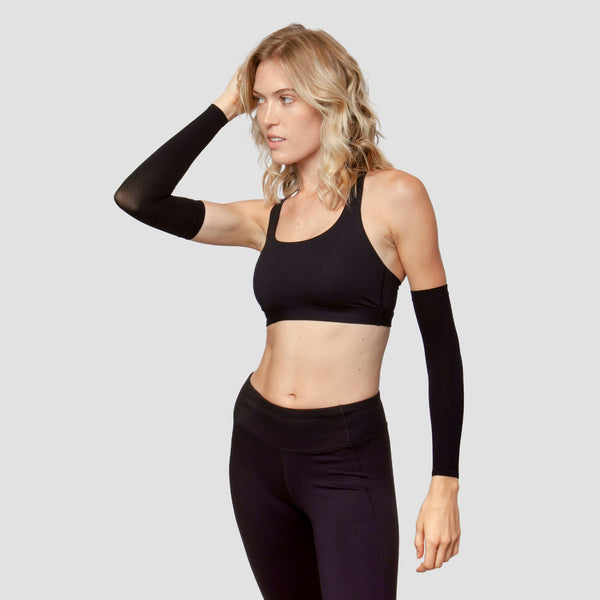Did you know 47% of Americans admit to never wearing sunscreen at all. Sunscreen is one of the most important aspects for sun safety.
To safeguard yourself from sunburn, weathering and aging, and potential skin cancer, all possible effects of repeated sun exposure, here are our top six tips for protecting your skin from the sun.
#1: Use sunscreen—and use it well
We’re looking at you, 47% of Americans, but not just at you. Many people mistakenly assume that sunscreen is only for times of obvious exposure. Actually, you expose your skin to the sun every time you go outside, so you should use a daily sunscreen with an SPF of at least 30. On beach days, look for water-resistant sunscreen.
Any sunscreen you use should also be broad-spectrum, meaning it will block both types of harmful UV rays (UVA and UVB) from the sun. Also, sunscreen should be applied about 15-30 minutes before going outside, and reapplied every couple of hours, particularly if you’re swimming or even just sweating. And yes: sunblock can expire, so keep an eye on those “best by” dates.
#2: Hats are a must

And not just any hats, wide-brim sun protective hats. The Skin Cancer Foundation recommends hats to have at least 3 inch wide brims to properly protect the face, scalp, neck, shoulders and upper back, ears.
Why are UV protection hats so important? 90% of basal cell and squamous cell carcinomas often appear on the head and neck. With hats, you can protect your face, scalp and neck.
We have hats for women, men and kids. Check out our UV protective hats collection here.
#3: Wear Sun Protective Clothing

Regular clothing may only have a UPF5 rating which blocks only 20% UV rays. Whereas UPF50+ clothing blocks upto 98% of sun rays keeping you safe.
We have our womens sun protective clothing collection which is perfect for every day wear for going to work, around town, in the yard gardening. We also have a mens UV protective clothing line that is fit for every day wear or outdoors like going to the beach, hiking, fishing, camping, etc.
#4: Seek the shade
The danger zone when the sun’s rays are most powerful is between 10 AM and 4 PM according to CDC, so limit your outdoors time outside these hours. Here’s a helpful tip you can remember as the “shadow rule”: these hours are also when your shadow is shorter than you.
If you have to be outdoors during this range, seek the shade. Scout out your planned location for trees, awnings, and air-conditioned buildings or storefronts you could enter to take a break from the blazing sun—or, if you’re going to the beach, bring along your very own UPF umbrella.
#5: Wear UV Protective Sunglasses
Maybe you want to explore without worrying about tracking down shade (or chasing your umbrella down the beach every time the wind blows). Fortunately, there’s a slew of summer accessories to keep you fashionable and sunburn-free.
Sunglasses, of course, are the quintessential summer accessory. Best of all? Sunglasses protect your eyes and the delicate skin around them from harmful overexposure. The best summer sunglasses will be labeled with 99% to 100% UVA/UVB absorption—note: that’s not necessarily the ones that “look” the darkest!— and will cover the most surface possible, like wrap-around or oversized sunglasses.
#5: Avoid reflected sunlight
Have you ever wondered why snowboarders and skiers look sunburnt red, even in the dead of winter? That’s because they are—thanks to the reflection of sun off the snow! Worse, UV exposure via reflection can cause sunburn in odd places where you don’t think to put sunscreen, like under your chin and nose.
If you’re around any reflective environment, like water, snow, or even beach sand, make sure to apply your sunscreen to all exposed areas, and reapply it often, especially to thinner skin like your lips and around your eyes. There are lip balms and moisturizers that contain SPF to help you in this endeavor.
#6: Check your medications
People on daily medications are often used to walking out the door without thinking too much about how those meds can interact with sunlight—after all, we’re in the sun every day, so how could it be harmful?
However, a surprisingly wide range of medications do increase your skin’s sensitivity to the sun. This includes certain acne medications, antidepressants, antibiotics, blood pressure meds, and even extremely common NSAIDs like ibuprofen or naproxen. A chat with your doctor or pharmacist is in order before you go out to catch some rays, just in case.
If you take all these tips into account the next time you walk out into a sunny day, they’ll help you keep your skin looking fresh, dewy, and most importantly healthy, so you can focus on having fun.





